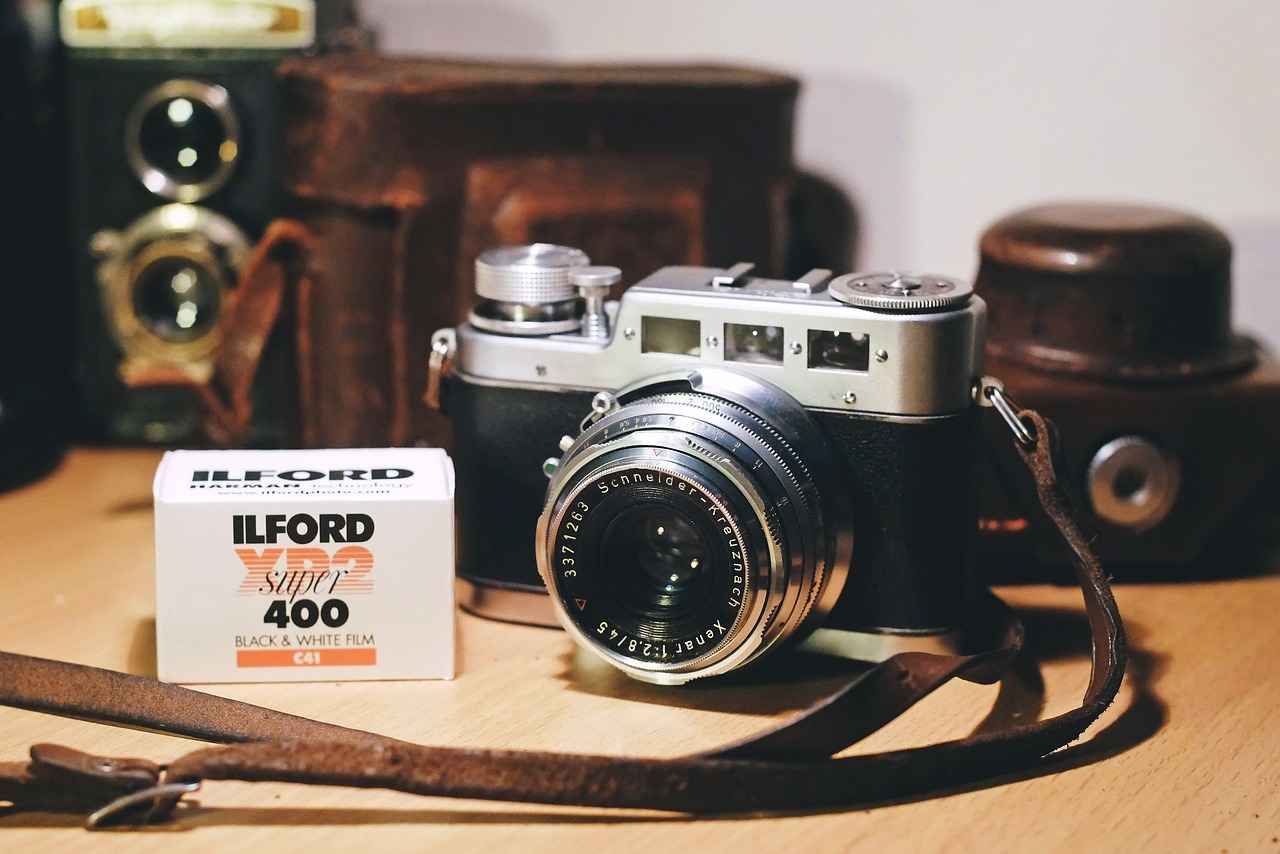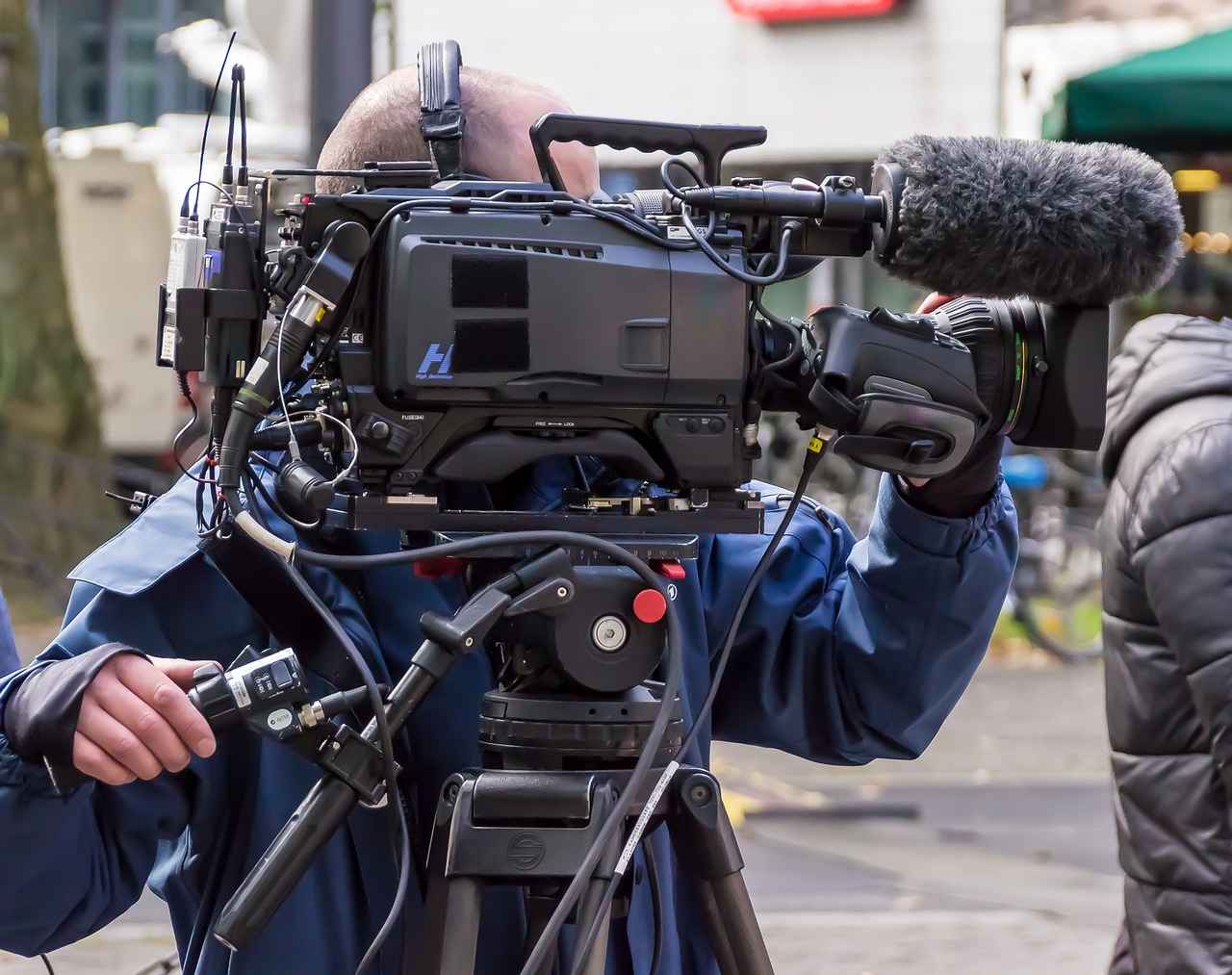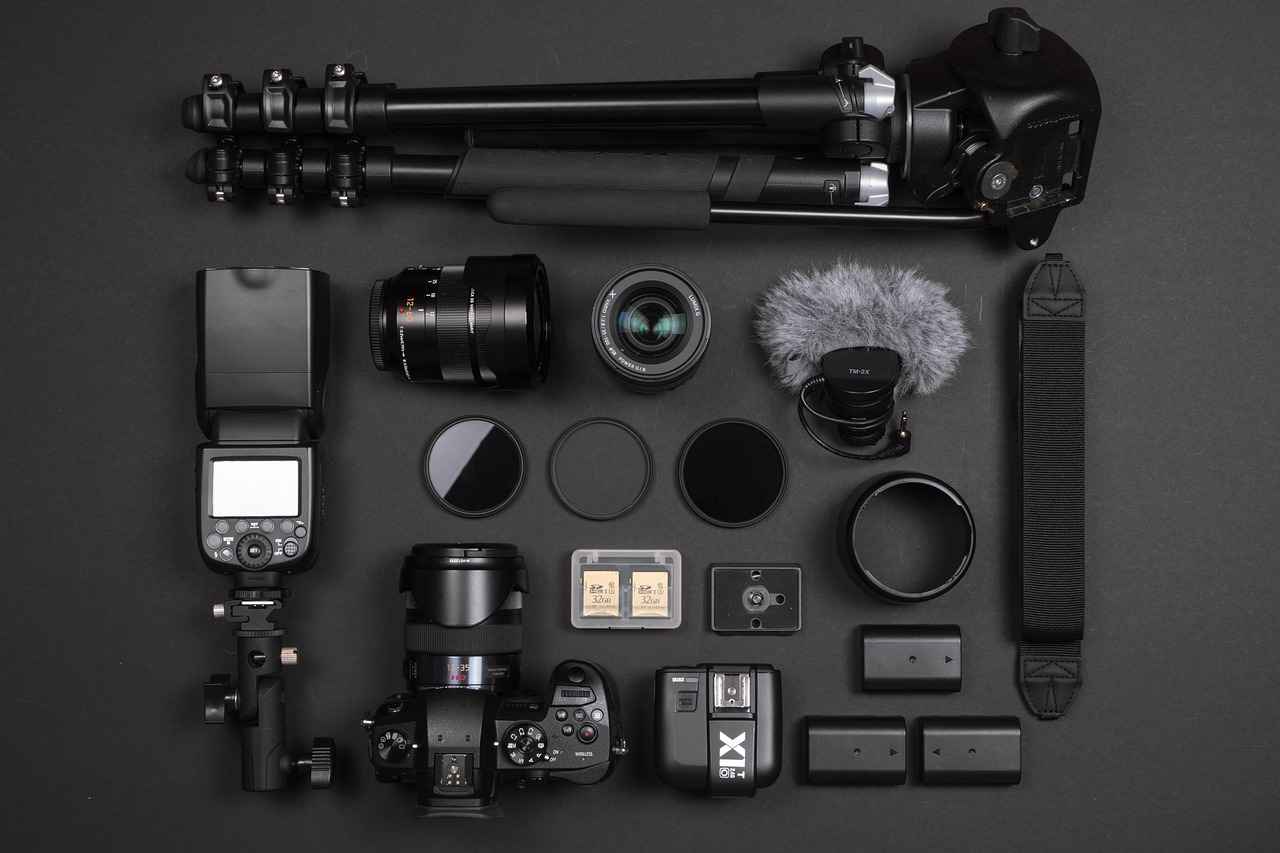This article delves into the remarkable advancements in energy efficiency within action cameras, highlighting how modern technology is evolving to enhance battery life and overall performance.
What Are Action Cameras?
Action cameras are compact and robust devices specifically designed to capture high-quality video and images in extreme environments. Their durability and portability make them favorites among adventurers, athletes, and content creators alike.
Why Energy Efficiency Matters in Action Cameras
Energy efficiency is vital for action cameras as it directly influences usability during lengthy activities. Enhanced battery life means users can record more footage without interruptions, allowing them to fully immerse themselves in their adventures.
How Do Action Cameras Consume Power?
Understanding power consumption in action cameras involves analyzing various factors, including:
- Recording modes
- Resolution settings
- Built-in features that affect battery drain
Each of these elements plays a role in how quickly the battery depletes during use.
Latest Innovations in Battery Technology
Recent advancements in battery technology, including lithium polymer batteries and fast-charging capabilities, are significantly improving energy efficiency. These innovations enable longer recording times and quicker recharge periods, making them ideal for action-packed scenarios.
Are Lithium Polymer Batteries the Future?
Lithium polymer batteries are gaining traction due to their lightweight design and higher energy density. This makes them particularly suitable for compact devices like action cameras, allowing for longer usage without compromising on performance.
What Role Does Fast Charging Play?
Fast charging technology is a game-changer, as it dramatically reduces downtime. Users can quickly recharge their action cameras between uses, enhancing overall efficiency during outdoor activities.
Energy-Saving Features in Modern Action Cameras
Many contemporary action cameras come equipped with energy-saving features, such as:
- Auto shut-off
- Low-power modes
- Adjustable frame rates
These features help extend battery life, allowing users to capture more footage without the constant worry of recharging.
How Does Recording Resolution Affect Battery Life?
Higher recording resolutions, such as 4K, can deplete batteries more quickly than lower resolutions. Users must understand the trade-offs between video quality and battery life to make informed decisions during their recordings.
What Is the Impact of Frame Rates?
Frame rates significantly influence energy consumption. Higher frame rates require more power, so users need to balance the desired smoothness of their footage with the efficiency of their battery usage.
Can Users Optimize Settings for Longer Use?
Users can optimize their settings by reducing resolution or frame rate to prolong battery life. This ensures they capture essential moments without interruption during their activities.
Are There Eco-Friendly Options Available?
As sustainability gains importance, some manufacturers are producing eco-friendly action cameras that utilize recyclable materials and energy-efficient technologies. These options appeal to environmentally conscious consumers who wish to minimize their ecological footprint.
What Are the Future Trends in Action Camera Technology?
The future of action camera technology is promising, with trends indicating further enhancements in energy efficiency, integration of AI for optimized performance, and developments in renewable energy sources for charging.
How Do User Reviews Reflect Energy Efficiency Improvements?
User reviews often highlight experiences regarding battery life and energy efficiency, providing valuable insights into how well new technologies meet consumer expectations in real-world scenarios.
Where Can You Find the Best Energy-Efficient Action Cameras?
To find the best energy-efficient action cameras, research reputable brands, compare specifications, and read user reviews. This approach will help ensure informed purchasing decisions that align with your needs.

What Are Action Cameras?
Action cameras have revolutionized the way we capture our adventures, offering a unique blend of portability, durability, and high-quality imaging. These compact devices are engineered to withstand the rigors of extreme environments, making them the go-to choice for thrill-seekers, travelers, and content creators alike. Whether you’re skiing down a mountain, diving into the ocean, or biking through rugged terrain, action cameras are designed to capture every moment with stunning clarity.
Action cameras are specialized recording devices that prioritize mobility and resilience. Unlike traditional cameras, they are built to be lightweight and compact, allowing users to easily carry them on various adventures. These cameras often feature a wide-angle lens, which enables them to capture expansive scenes, making them ideal for action-packed activities.
One of the defining characteristics of action cameras is their durability. Many models are waterproof, shockproof, and dustproof, ensuring that they can function in harsh conditions without compromising performance. This durability is particularly appealing to outdoor enthusiasts who demand reliable equipment in unpredictable environments.
In addition to their robust build, action cameras are equipped with advanced technology that allows for high-definition video recording and high-resolution photography. Many models support 4K video, providing users with the ability to capture stunning footage that can be enjoyed on large screens or shared on social media platforms.
- Versatility: Action cameras are not just for extreme sports. They can be used for family events, travel vlogs, and even as dash cams.
- Portability: Their small size makes them easy to carry, often fitting in a pocket or small bag.
- Mounting Options: Various mounts are available, allowing users to attach the camera to helmets, bikes, or even drones for unique perspectives.
These cameras often come with built-in features like Wi-Fi connectivity and smartphone compatibility, enabling users to quickly share their footage and images online. This integration with mobile technology enhances the user experience, allowing for seamless editing and sharing on the go.
Choosing an action camera over a traditional camera can be beneficial for several reasons. The compact design and rugged features make them ideal for capturing spontaneous moments without the bulkiness of larger equipment. Additionally, their ability to withstand the elements means you can focus on your activities without worrying about damaging your gear.
For content creators, action cameras offer a unique storytelling perspective. The wide-angle lens captures more of the environment, immersing viewers in the experience. Furthermore, with the rise of social media, the demand for engaging and dynamic content has increased, making action cameras an essential tool for anyone looking to enhance their visual storytelling.
In summary, action cameras are versatile, durable, and technologically advanced devices that cater to a wide range of users. Their ability to capture high-quality images and videos in extreme conditions makes them an invaluable tool for adventurers and content creators alike. As technology continues to evolve, we can expect even more innovations that will enhance the capabilities of these remarkable devices.

Why Energy Efficiency Matters in Action Cameras
In the world of action cameras, energy efficiency has emerged as a critical factor that influences both usability and performance. As these compact devices are often used in high-energy activities like sports, travel, and adventure, the ability to maximize battery life can significantly enhance the user experience. This article delves into the reasons why energy efficiency is essential for action cameras and how it can affect the overall functionality and satisfaction of users.
Energy efficiency is vital for action cameras due to several key reasons:
- Extended Recording Time: Improved battery life allows users to capture more footage without interruption. When engaging in activities like hiking, biking, or surfing, users often want to record long stretches of action. A camera that can last longer between charges ensures that no significant moments are missed.
- Convenience: Action cameras are designed for portability and ease of use. With a longer battery life, users can spend less time worrying about recharging and more time enjoying their adventures. This convenience is especially important during outdoor activities where access to power sources may be limited.
- Performance Optimization: Energy-efficient cameras often come equipped with advanced features that optimize power consumption. These may include adaptive recording modes that adjust settings based on the environment or activity, ensuring that the battery lasts longer without sacrificing quality.
- Cost-Effectiveness: Users benefit from longer-lasting batteries, reducing the need for frequent replacements. This not only saves money but also minimizes waste, making energy-efficient cameras a more sustainable choice.
Understanding how action cameras consume power is essential for maximizing their efficiency. Several factors contribute to battery drain:
- Recording Modes: Different recording modes, such as 4K or slow-motion, require varying amounts of power. Higher resolutions consume more energy, making it crucial for users to choose settings that balance quality and battery life.
- Built-in Features: Features like Wi-Fi connectivity, GPS, and image stabilization can significantly impact battery usage. Users should be mindful of which features they enable to extend battery life during critical moments.
Many modern action cameras are equipped with innovative energy-saving features designed to extend battery life:
- Auto Shut-off: This feature automatically powers down the camera after a period of inactivity, preserving battery life.
- Low-Power Modes: When activated, these modes reduce the camera’s performance to conserve energy while still allowing for basic functionality.
- Adjustable Frame Rates: Users can select frame rates based on their needs, allowing for longer recording times at lower frame rates.
Absolutely! Users can take several practical steps to optimize their action camera settings for longer battery life:
- Reduce Resolution: Opting for lower resolution settings can significantly extend recording time, especially for less critical footage.
- Limit Frame Rates: Choosing a lower frame rate can also help conserve battery life while still providing acceptable video quality.
- Turn Off Unused Features: Disabling features like Wi-Fi and GPS when not needed can reduce battery drain considerably.
In conclusion, as action cameras continue to evolve, the importance of energy efficiency cannot be overstated. By focusing on battery life and implementing energy-saving technologies, manufacturers are enhancing user experience and performance. As users become more informed about how to manage their camera settings, they can enjoy longer recording times and capture more of their adventures without interruption.

How Do Action Cameras Consume Power?
Understanding how action cameras consume power is essential for maximizing their performance and ensuring users capture the moments that matter most. Various factors contribute to the overall battery drain during use, and being aware of these elements can help users make informed choices for their recording needs.
- Recording Modes: Different recording modes can significantly impact battery life. For instance, using features like time-lapse or slow motion may consume power differently compared to standard video recording. Users should consider their intended use to select the most efficient mode.
- Resolution Settings: The resolution at which videos are recorded plays a crucial role in power consumption. Higher resolutions, such as 4K, require more processing power and therefore drain the battery more quickly than lower resolutions like 1080p. Users must balance their need for high-quality footage with the potential for reduced recording time.
- Frame Rates: Frame rates also affect battery usage. Higher frame rates, such as 60fps or more, create smoother video but require more energy. Users should assess their priorities—whether they prefer smooth motion or longer recording durations.
- Built-in Features: Many modern action cameras come equipped with various features such as Wi-Fi, GPS, and voice control. While these features enhance usability, they can also lead to increased battery drain. Users should consider turning off non-essential features when not in use to conserve battery life.
When using an action camera, it’s important to recognize that battery life isn’t solely determined by the settings. Environmental factors, such as temperature, can also play a role. Cold weather can cause batteries to drain more quickly, which is particularly relevant for outdoor enthusiasts.
Moreover, the age and condition of the battery can affect performance. As batteries age, their capacity diminishes, leading to shorter usage times. Regular maintenance and proper charging practices can help extend battery life.
- Adjust Settings: Users can optimize their camera settings by lowering the resolution or frame rate when high quality isn’t necessary. This simple adjustment can significantly extend recording time.
- Utilize Battery Saving Modes: Many action cameras feature battery-saving modes that automatically adjust settings to conserve power. Enabling these modes can be beneficial during extended shoots.
- Regularly Update Firmware: Keeping the camera’s firmware updated ensures optimal performance and efficiency, as manufacturers often release updates that enhance battery management.
Understanding power consumption in action cameras is vital for users who engage in activities like hiking, cycling, or extreme sports. By being aware of how different settings affect battery life, users can better prepare for their adventures, ensuring they capture all the action without interruption.
In conclusion, recognizing the various factors that contribute to power consumption in action cameras allows users to make informed decisions. By adjusting settings and utilizing energy-saving features, they can enhance their recording experience and ensure they don’t miss out on capturing their most memorable moments.

Latest Innovations in Battery Technology
have revolutionized the way we use action cameras, significantly enhancing their performance and usability. With the growing demand for longer recording times and efficient power management, manufacturers are turning to advanced battery technologies that promise to meet these needs.
One of the most notable advancements is the development of lithium polymer batteries. Unlike traditional lithium-ion batteries, lithium polymer batteries are lightweight and flexible, allowing for more compact designs without sacrificing power. This innovation is particularly beneficial for action cameras, where size and weight are critical factors. The higher energy density of lithium polymer batteries means that users can enjoy longer recording times, making them ideal for outdoor adventures or extended shooting sessions.
In addition to battery chemistry, fast-charging technology is another game changer. This feature allows users to recharge their action cameras quickly, minimizing downtime between shoots. With the ability to achieve a significant charge in just a short period, adventurers can spend more time capturing their experiences and less time waiting for their devices to power up. Fast charging not only enhances convenience but also encourages users to take their cameras on longer excursions, knowing they can quickly recharge when necessary.
What are the benefits of lithium polymer batteries?
- Lightweight: Reduces the overall weight of the camera.
- Higher energy density: Provides longer recording times.
- Flexible design: Allows for innovative camera shapes and sizes.
How does fast charging technology enhance user experience?
- Reduced downtime: Quickly recharge between uses.
- Improved convenience: Allows for spontaneous shooting opportunities.
- Increased usability: Encourages longer adventures with minimal interruptions.
Moreover, many modern action cameras are integrating energy-saving features that work in tandem with these battery innovations. Features like auto shut-off, low-power modes, and adjustable frame rates help to extend battery life even further. Users can customize their settings based on their specific needs, allowing for a tailored shooting experience that maximizes efficiency.
What energy-saving features are commonly found in action cameras?
- Auto shut-off: Automatically turns off the camera when not in use.
- Low-power modes: Reduces power consumption during idle times.
- Adjustable frame rates: Lets users select frame rates that balance quality and battery life.
Finally, as the industry continues to push for sustainability, some manufacturers are exploring eco-friendly battery solutions. These options not only focus on energy efficiency but also on using recyclable materials in battery production. Environmentally conscious consumers can now choose action cameras that align with their values while still enjoying the latest technological advancements.
In summary, the latest innovations in battery technology, including lithium polymer batteries and fast-charging capabilities, are significantly enhancing the energy efficiency of action cameras. These advancements enable longer recording times, quicker recharge periods, and a more enjoyable user experience overall. As technology continues to evolve, we can expect even more exciting developments that will further improve the functionality and sustainability of action cameras.
Are Lithium Polymer Batteries the Future?
Lithium polymer batteries have emerged as a game changer in the realm of portable electronics, particularly in action cameras. These batteries are known for their lightweight design and higher energy density, which make them an ideal choice for compact devices that require reliable and long-lasting power.
One of the primary advantages of lithium polymer batteries is their ability to deliver a significant amount of energy in a smaller form factor. This characteristic is particularly beneficial for action cameras, which are designed to be portable and durable. The lightweight nature of these batteries allows manufacturers to create slimmer and more efficient devices without compromising on performance.
Moreover, lithium polymer batteries offer a higher energy density compared to traditional lithium-ion batteries. This means that they can store more energy in the same amount of space, allowing for longer recording times without the need for frequent recharging. As action cameras are often used in adventurous settings where power sources may be limited, this advantage cannot be overstated.
What Other Benefits Do Lithium Polymer Batteries Provide?
- Flexible Shapes and Sizes: Unlike rigid lithium-ion batteries, lithium polymer batteries can be manufactured in various shapes and sizes, making them highly versatile for different camera designs.
- Improved Safety: Lithium polymer batteries are less prone to leakage and can be designed to be more stable under extreme conditions, reducing the risk of accidents.
- Faster Charging Times: These batteries often support faster charging technologies, allowing users to quickly recharge their action cameras between uses, enhancing overall efficiency.
How Do Lithium Polymer Batteries Compare to Other Battery Types?
When compared to traditional lithium-ion batteries, lithium polymer batteries have distinct advantages. While lithium-ion batteries tend to be heavier and bulkier, lithium polymer options provide a more compact solution. This is crucial for action cameras that prioritize mobility and ease of use.
Additionally, lithium polymer batteries typically have a longer lifespan, which is essential for users who rely on their cameras for extended periods. The ability to withstand more charge cycles without significant degradation means that users can enjoy their devices for longer, making them a cost-effective choice in the long run.
Are There Any Drawbacks?
While lithium polymer batteries have numerous benefits, they are not without their challenges. They can be more expensive to produce compared to other battery types, which may reflect in the overall cost of devices using them. Furthermore, if not handled properly, they can be susceptible to swelling and damage, which necessitates careful usage and storage.
What Does the Future Hold for Lithium Polymer Batteries?
As technology continues to advance, the potential for lithium polymer batteries in action cameras and other portable devices is immense. Researchers are exploring ways to enhance their performance further, including increasing their energy density and reducing costs. This ongoing innovation is likely to make lithium polymer batteries even more prevalent in the future, solidifying their role as a preferred power source for action cameras.
In conclusion, lithium polymer batteries represent a significant advancement in battery technology, particularly for action cameras. Their lightweight design, higher energy density, and versatility make them an ideal choice for users who demand reliable performance in compact devices. As the technology evolves, we can expect even greater improvements, making them a prominent feature in the future of portable electronics.
What Role Does Fast Charging Play?
Fast charging technology has become a game-changer in the realm of action cameras, significantly enhancing user experience during outdoor adventures. As these devices are often used in extreme conditions, where every moment counts, the ability to quickly recharge can make a substantial difference.
Fast charging refers to the ability to recharge a device’s battery at a much quicker rate than traditional charging methods. This is achieved through advanced battery management systems and specialized chargers that deliver higher voltage and current.
For action camera enthusiasts, downtime can be a significant drawback. Whether you’re hiking, biking, or engaging in water sports, the moments you want to capture can be fleeting. Fast charging technology allows users to minimize downtime by quickly replenishing battery life between shoots. This means that a user can spend less time waiting for their camera to charge and more time capturing breathtaking moments.
With fast charging, users can recharge their action cameras in a fraction of the time it would take with standard chargers. For instance, a camera that typically takes several hours to charge may only need 30 minutes with fast charging technology. This capability is particularly beneficial during long trips or events where the camera is used frequently.
- Quick Turnaround: Users can quickly recharge their devices between activities, ensuring they don’t miss out on important moments.
- Enhanced Portability: With the ability to recharge quickly, users can carry fewer batteries, making their gear lighter and more manageable.
- Improved User Experience: Fast charging reduces the frustration associated with waiting for a battery to charge, leading to a more enjoyable experience overall.
Most new action camera models are designed to support fast charging technology. This compatibility allows users to take advantage of the latest advancements without needing to invest in new gear. Furthermore, many manufacturers provide fast chargers as part of the package, ensuring that users have the tools they need right out of the box.
While fast charging offers numerous advantages, it is important to consider a few limitations. Not all batteries are designed to handle rapid charging, and frequent use of fast charging may impact battery longevity over time. Users should consult their action camera’s manual to understand the best practices for charging to maintain battery health.
Fast charging technology is undeniably transforming the way action camera users approach their adventures. By significantly reducing downtime, it allows for a more efficient and enjoyable experience. As technology continues to evolve, we can expect even more improvements in battery performance and charging capabilities, further enhancing the usability of action cameras in the field.

Energy-Saving Features in Modern Action Cameras
In the world of action cameras, energy efficiency has become a significant focus for manufacturers aiming to enhance user experience. As adventurers and content creators seek to capture every moment, the demand for longer battery life has led to innovative solutions. This article delves into the energy-saving features found in modern action cameras and how they enhance usability during recording sessions.
Energy-saving features in action cameras are designed to optimize power consumption, ensuring that users can record for extended periods without frequent recharging. Some of the most common features include:
- Auto Shut-Off: This feature automatically powers down the camera after a period of inactivity, preventing unnecessary battery drain.
- Low-Power Modes: Low-power settings reduce the camera’s performance to conserve energy, allowing for longer recording times, especially during less demanding activities.
- Adjustable Frame Rates: Users can select lower frame rates when high-speed recording is not necessary, which significantly decreases energy consumption.
The implementation of these energy-saving features can greatly extend the battery life of action cameras. For instance, when auto shut-off is activated, users can avoid the frustration of returning to a dead battery. Low-power modes are particularly useful during long hikes or camping trips, where charging options may be limited. Additionally, adjustable frame rates allow users to tailor their recording settings based on the activity, balancing between video quality and battery longevity.
Modern action cameras are designed with user experience in mind. Most energy-saving features are easily accessible through the camera’s settings menu, allowing users to customize their preferences quickly. This accessibility ensures that even novice users can take advantage of these features without extensive technical knowledge. Moreover, many cameras now come with intuitive interfaces that guide users in optimizing their settings for better battery performance.
Utilizing energy-saving features offers several benefits:
- Extended Recording Time: By reducing power consumption, users can record longer videos without needing to recharge.
- Increased Convenience: Less frequent charging means more time spent capturing moments and less time worrying about battery life.
- Cost Efficiency: By optimizing battery usage, users can prolong the lifespan of their batteries, reducing the need for replacements.
While many action cameras include energy-saving features, the effectiveness and implementation can vary significantly between brands. Some manufacturers prioritize battery efficiency more than others, offering advanced options that enhance performance. When choosing an action camera, it is essential to research and compare the energy-saving features of different models. User reviews and expert opinions can provide valuable insights into how well these features perform in real-world scenarios.
The landscape of action cameras is continually evolving, with manufacturers exploring new technologies to improve energy efficiency. Future innovations may include:
- Smart Battery Management: Advanced algorithms that monitor usage patterns and adjust settings dynamically to conserve energy.
- Solar Charging Options: Integrating solar panels into camera designs to allow for on-the-go charging during outdoor activities.
- Enhanced Battery Materials: Research into new battery technologies that offer higher energy densities and faster charging times.
As energy efficiency becomes increasingly important, action camera manufacturers are likely to continue developing innovative features that not only extend battery life but also enhance the overall user experience. By leveraging these advancements, users can ensure they capture every thrilling moment, regardless of how long their adventures last.

How Does Recording Resolution Affect Battery Life?
As action cameras become increasingly popular for capturing high-quality footage during adventures, understanding how recording resolution impacts battery life is crucial for users. Higher recording resolutions, such as 4K, provide stunning visuals but can significantly drain batteries faster than their lower-resolution counterparts. This article delves into the intricacies of how resolution affects power consumption and offers practical tips for optimizing battery life.
The primary reason higher resolutions consume more power is due to the increased amount of data that needs to be processed. Recording in 4K resolution requires the camera to work harder, utilizing more processing power and, consequently, more energy. This increased demand leads to a faster depletion of the battery compared to lower resolutions like 1080p or 720p.
When choosing between different resolutions, users must consider the trade-offs between video quality and battery life. While 4K offers superior image clarity and detail, it may not be necessary for all situations. For casual use or longer recording sessions, opting for a lower resolution can extend battery life significantly.
In addition to resolution, the frame rate at which the video is recorded also plays a vital role in energy consumption. Higher frame rates, such as 60fps or 120fps, require more processing power, further draining the battery. Users should find a balance between desired smoothness and energy efficiency, especially for long-duration recordings.
Yes, users can optimize their action camera settings to enhance battery performance. Here are some practical tips:
- Reduce Resolution: Switching to a lower resolution can significantly extend battery life.
- Adjust Frame Rate: Lowering the frame rate can also help conserve power.
- Utilize Power-Saving Modes: Many modern cameras come with built-in power-saving features that can prolong usage.
- Turn Off Unused Features: Disabling Wi-Fi, GPS, and other non-essential features can save battery.
For users who prioritize battery life over ultra-high-definition video, there are several alternatives. 1080p resolution is still widely accepted for most applications and provides excellent quality while conserving battery power. Additionally, some action cameras offer adaptive resolution settings that automatically adjust based on available battery life.
As technology advances, we can expect improvements in both battery efficiency and recording capabilities. Manufacturers are continuously researching ways to enhance energy efficiency without compromising video quality. Innovations such as AI-driven optimization and better battery technologies are likely to play a significant role in the future of action cameras.
In conclusion, understanding how recording resolution affects battery life is essential for action camera users. By weighing the benefits of higher resolutions against their impact on battery consumption, users can make informed decisions that best suit their needs. Employing strategies to optimize settings can also lead to longer recording times, allowing adventurers to capture their experiences without interruption.
What Is the Impact of Frame Rates?
In the world of action cameras, frame rates significantly influence both the quality of footage and the energy consumption of the device. Understanding this relationship is crucial for users who want to maximize their camera’s performance while also maintaining battery efficiency.
Frame rate, measured in frames per second (fps), dictates how many individual images are captured and displayed each second. Common frame rates include 30 fps, 60 fps, and even 120 fps for high-action scenarios. While higher frame rates can result in smoother video playback, they also demand more power from the camera’s battery.
As frame rates increase, so does the energy consumption. For instance, recording at 60 fps generally consumes more battery than recording at 30 fps. This is because the camera’s sensor and processor work harder to capture and process more frames in the same amount of time. Users should consider their recording needs carefully: while a higher frame rate may enhance video quality for fast-moving scenes, it can lead to quicker battery depletion.
Users often face the dilemma of choosing between smoother footage and extended battery life. For example, during a long hike or an outdoor adventure, opting for a lower frame rate can significantly prolong recording time. Many modern action cameras allow users to adjust frame rates easily, providing flexibility to suit different situations.
- Assess the Action: If filming fast-paced activities, consider using a higher frame rate to capture every detail.
- Evaluate Battery Life: Be aware of your camera’s battery status and adjust frame rates accordingly to avoid interruptions.
- Utilize Low-Power Modes: Many cameras feature settings that can help conserve energy while still delivering acceptable video quality.
It’s essential to recognize that frame rates do not operate in isolation; they often work in conjunction with resolution settings. Higher resolutions, such as 4K, can further strain battery life, especially at elevated frame rates. Therefore, when planning to record high-resolution footage, users should carefully weigh the frame rate against the desired resolution to find the optimal balance.
As technology advances, we can expect innovations that improve how action cameras manage frame rates and energy consumption. Manufacturers are continually researching ways to enhance battery efficiency while maintaining high-quality video output. This could lead to features that allow for dynamic frame rate adjustments based on the scene being recorded, optimizing both performance and battery life.
In summary, understanding the impact of frame rates on energy consumption is crucial for action camera users. By balancing the desire for smooth, high-quality footage with the need for extended battery life, users can make informed decisions that enhance their recording experiences. Whether adjusting settings based on activity or leveraging new technologies, being mindful of frame rates will lead to better outcomes in capturing those unforgettable moments.
Can Users Optimize Settings for Longer Use?
In the world of action cameras, battery life is often a critical concern for users who want to capture every thrilling moment without interruption. Fortunately, many modern action cameras come equipped with various settings that allow users to optimize their devices for longer usage. Understanding how to effectively adjust these settings can make a significant difference in preserving battery life during extended recording sessions.
One of the most effective ways to enhance battery longevity is by reducing the recording resolution. While shooting in high resolutions, such as 4K, may yield stunningly detailed footage, it also demands a considerable amount of power. By switching to a lower resolution, such as 1080p or even 720p, users can significantly reduce battery drain, allowing for longer recording times without sacrificing too much video quality for standard viewing.
Another crucial factor is the frame rate at which the camera records. Higher frame rates, such as 60fps or 120fps, provide smoother motion but also consume more energy. For users who are not capturing fast-paced action, lowering the frame rate to 30fps can lead to substantial energy savings. This adjustment is particularly beneficial when filming static scenes or less dynamic activities.
Additionally, many action cameras feature power-saving modes that can be activated to extend battery life. These modes often include functions like automatic shut-off after a period of inactivity, which can prevent unnecessary battery drain when the camera is not in use. Users should familiarize themselves with these settings and utilize them to maximize their camera’s efficiency.
Another practical tip is to limit the use of built-in features that may consume additional power, such as Wi-Fi or GPS. While these features enhance the functionality of the camera, they can also lead to quicker battery depletion. Disabling Wi-Fi when it’s not needed, for instance, can help conserve energy during long shoots.
For those who frequently find themselves in situations where they need to capture long durations of footage, investing in additional batteries or a portable charger can also be a wise choice. This way, users can quickly swap out batteries or recharge their devices on the go, ensuring they never miss a moment.
In summary, optimizing settings on action cameras is essential for users looking to extend battery life during their adventures. By adjusting resolution and frame rates, utilizing power-saving features, and managing built-in functionalities, users can ensure they capture all the essential moments without the worry of running out of battery. These simple yet effective strategies can transform the way users experience their action cameras, making every adventure memorable.

Are There Eco-Friendly Options Available?
As the world increasingly prioritizes sustainability, the demand for eco-friendly products has surged across various industries, including technology. Action cameras, known for their ability to capture high-quality footage in extreme conditions, are no exception. Manufacturers are now focusing on creating environmentally responsible options that not only meet consumer needs but also contribute positively to the planet.
Eco-friendly action cameras are designed with sustainability in mind. They often utilize recyclable materials, reducing waste and minimizing the environmental impact of production. Additionally, these cameras incorporate energy-efficient technologies that help conserve battery life, allowing users to record longer without needing frequent recharges. This is particularly beneficial for adventurers who spend extended periods in the field.
- Recyclable Materials: Many manufacturers are now using materials that can be recycled at the end of the camera’s life cycle, significantly reducing landfill waste.
- Energy-Efficient Designs: These cameras are engineered to consume less power, extending battery life and reducing the frequency of recharging.
- Solar Charging Options: Some models come with solar panels, allowing users to harness renewable energy for charging, which is perfect for outdoor activities.
Performance is a crucial aspect of any action camera. Eco-friendly models are no longer just about being green; they also deliver high-quality video and image capture. With advancements in technology, these cameras are equipped with features like 4K recording, excellent stabilization, and durable designs that withstand harsh conditions, making them suitable for both amateur and professional use.
Choosing an eco-friendly action camera not only benefits the environment but also aligns with the values of consumers who prioritize sustainability. By opting for these products, users support companies that are committed to reducing their ecological footprint. Furthermore, many eco-friendly models come with warranties and support, ensuring that consumers can enjoy their products for years to come without contributing to waste.
Several brands are pioneering the development of eco-friendly action cameras:
- GoPro: Known for its innovation, GoPro has introduced models that use recycled materials and promote energy efficiency.
- DJI: This brand integrates sustainable practices in its manufacturing processes, focusing on reducing carbon emissions.
- Insta360: With a commitment to sustainability, Insta360 is producing cameras that are both high-performance and eco-conscious.
The rise in consumer awareness regarding environmental issues has led to increased demand for sustainable products. As more people recognize the importance of eco-friendly technology, manufacturers are likely to continue innovating in this space. Reviews and feedback from environmentally conscious consumers play a significant role in shaping the market, pushing brands to enhance their sustainability efforts.
Looking ahead, the trend towards sustainability in action cameras is expected to grow. Future developments may include:
- Integration of Biodegradable Materials: Researchers are exploring the use of biodegradable plastics, which could revolutionize the way cameras are produced.
- Enhanced Renewable Energy Solutions: More cameras may feature built-in solar panels or other renewable energy options to reduce reliance on traditional charging methods.
- Smart Technology for Energy Management: Upcoming models may incorporate AI to optimize power usage based on user habits, further enhancing energy efficiency.
In conclusion, the evolution of eco-friendly action cameras represents a significant shift in the technology landscape, catering to the growing demand for sustainable products. As manufacturers continue to innovate, consumers can expect to find high-performance options that are not only effective in capturing their adventures but also kind to the environment.

What Are the Future Trends in Action Camera Technology?
As technology continues to evolve, the landscape of action cameras is changing dramatically. Future trends in action camera technology are set to redefine how users capture and share their adventures. This article delves into the latest innovations that promise to enhance performance, improve energy efficiency, and integrate cutting-edge features.
The future of action cameras is bright, with several key trends emerging that will shape their development. One of the most significant trends is the enhancement of energy efficiency. As users demand longer battery life, manufacturers are investing in advanced battery technologies and energy-saving features. This includes innovations such as:
- Next-Generation Battery Technology: The adoption of lithium-silicon batteries is on the rise, offering higher capacity and faster charging times compared to traditional lithium-ion batteries.
- Solar Charging Options: Some brands are exploring the integration of solar panels into camera designs, allowing for renewable energy charging during outdoor activities.
Another exciting trend is the integration of artificial intelligence (AI) within action cameras. AI can optimize various camera functions, enhancing user experience through:
- Smart Scene Recognition: AI algorithms can automatically adjust settings based on the environment, ensuring optimal image quality without manual intervention.
- Real-Time Editing: AI can assist in video editing, enabling users to create professional-looking content with minimal effort.
As the world shifts towards sustainability, the development of renewable energy sources for charging action cameras is gaining traction. Manufacturers are exploring options such as:
- Biodegradable Batteries: Innovations in biodegradable materials for batteries could reduce environmental impact while maintaining performance.
- Portable Solar Chargers: These chargers are becoming increasingly popular among outdoor enthusiasts, providing an eco-friendly way to keep devices powered during extended trips.
Connectivity features are also evolving, with Wi-Fi and Bluetooth enhancements allowing for seamless sharing and remote control. Future models may include:
- 5G Connectivity: Faster data transfer rates will enable users to upload high-resolution content instantly from remote locations.
- Integration with Smart Devices: Action cameras may become more compatible with smart home systems, allowing for automated video recording based on user-defined parameters.
As consumers seek personalized experiences, the demand for customizable settings in action cameras is likely to grow. Future models may offer:
- User-Defined Profiles: Users could create profiles that save specific settings for different activities, such as skiing or biking.
- Modular Accessories: The ability to attach various lenses or filters will allow users to enhance their camera’s capabilities based on their needs.
In summary, the future of action cameras is poised for exciting advancements that will significantly improve user experience. With a focus on energy efficiency, AI integration, and sustainable practices, these devices will not only capture moments but also align with the growing demand for eco-conscious technology. As these trends unfold, users can look forward to a new era of action cameras that are more efficient, intelligent, and tailored to their adventurous lifestyles.

How Do User Reviews Reflect Energy Efficiency Improvements?
User reviews play a crucial role in understanding the real-world performance of action cameras, particularly when it comes to battery life and energy efficiency. As technology advances, manufacturers strive to create devices that not only meet but exceed consumer expectations. This section delves into how user feedback sheds light on these improvements and what it means for potential buyers.
User reviews provide firsthand accounts of how well action cameras perform in everyday situations. Consumers often share their experiences regarding battery longevity and the effectiveness of energy-saving features. This information is invaluable for prospective buyers looking to assess whether a particular model will meet their needs during extended activities.
Many reviews emphasize the significance of battery life, especially for those engaged in adventure sports or long filming sessions. Users frequently highlight how long they can record before needing a recharge. For instance, a common sentiment is that cameras with improved battery technology allow for longer shooting times, which is essential for capturing all the action without interruptions.
Modern action cameras are equipped with various energy-saving features that users often discuss in their reviews. Features like auto shut-off and low-power modes are frequently praised for extending battery life. Users report that these features are particularly useful during long hikes or outdoor events where charging options are limited.
While higher recording resolutions, such as 4K, offer stunning visuals, they come at the cost of increased power consumption. User reviews often reflect this dilemma, with many mentioning the need to balance video quality against battery life. Some users opt for lower resolutions during longer shoots to ensure they can capture essential moments without running out of power.
Fast charging technology has garnered positive feedback from users who appreciate the ability to quickly recharge their cameras between uses. Many reviews highlight how this feature minimizes downtime, allowing users to get back to capturing their adventures without lengthy interruptions. This is particularly beneficial for those who may not have access to power sources during their outings.
Another common theme in user reviews is the ability to optimize settings for improved battery life. Many users share tips on how adjusting resolution and frame rates can lead to longer usage times. This community-driven advice allows potential buyers to make informed decisions about how best to use their cameras for extended periods.
As sustainability becomes increasingly important, some action camera manufacturers are introducing eco-friendly options. User reviews often touch on how these cameras utilize recyclable materials and energy-efficient technologies. Consumers express appreciation for brands that prioritize environmental responsibility, making these products more appealing to eco-conscious buyers.
Ultimately, user reviews serve as a powerful tool for influencing purchasing decisions. By sharing their experiences with battery life and energy efficiency, users provide valuable insights that help others choose the right action camera for their needs. This collective knowledge fosters a more informed consumer base and encourages manufacturers to continue innovating in energy-efficient technologies.
In summary, user reviews are essential in reflecting the improvements in energy efficiency of action cameras. They offer a wealth of information that can guide potential buyers in making informed choices, ensuring they select a device that meets their energy needs during their adventures.

Where Can You Find the Best Energy-Efficient Action Cameras?
In the quest for capturing breathtaking moments, energy-efficient action cameras have become essential tools for adventurers and content creators alike. As technology advances, the demand for cameras that not only deliver high-quality footage but also conserve battery life has surged. This article delves into where you can find the best energy-efficient action cameras, ensuring you make informed purchasing decisions.
When searching for the best energy-efficient action cameras, it’s crucial to start with reputable brands. Companies like GoPro, DJI, and Sony have established themselves as leaders in the action camera market, consistently innovating and improving their products. These brands often offer detailed specifications and insights into their energy-saving technologies, making it easier for consumers to compare options.
Specifications are the backbone of any purchasing decision. Look for action cameras that feature:
- Battery Capacity: A higher mAh rating typically indicates longer usage times.
- Recording Modes: Cameras offering various modes (such as 4K, 1080p, etc.) can help you choose settings that balance quality and battery life.
- Energy-Saving Features: Options like auto shut-off and low-power modes can significantly extend battery life during use.
User reviews are invaluable when assessing the performance of action cameras. They provide real-world insights into how well a camera performs under different conditions. Look for reviews that specifically mention:
- Battery Life: Users often share their experiences regarding how long the camera lasts during extended use.
- Charging Times: Feedback on how quickly the camera recharges can help you gauge convenience.
- Overall Satisfaction: Consider the general sentiment of users regarding energy efficiency.
Online marketplaces such as Amazon, Best Buy, and B&H Photo Video are excellent places to find a variety of energy-efficient action cameras. These platforms often feature:
- Customer Ratings: A quick glance at ratings can help you identify popular models.
- Detailed Comparisons: Many sites offer comparison tools to help you evaluate multiple cameras side by side.
- Promotions and Discounts: Keep an eye out for seasonal sales that can provide significant savings.
For those who prefer hands-on experience, visiting specialty electronics or photography stores can be beneficial. Here, you can:
- Test Cameras: Handling the cameras can give you a better feel for their usability and features.
- Ask Experts: Store staff can provide insights and recommendations based on your specific needs.
- Check for Bundles: Many stores offer bundles that include accessories that enhance the camera’s performance and usability.
Finally, don’t overlook the importance of checking the manufacturer’s website. These sites often provide:
- Latest Models: Stay updated on new releases that may feature improved energy efficiency.
- Technical Support: Access to manuals and FAQs can help you understand the energy-saving features of each model.
- Promotional Offers: Manufacturers sometimes run exclusive promotions that are only available through their websites.
By following these steps—researching reputable brands, comparing specifications, reading user reviews, exploring online marketplaces, visiting specialty stores, and checking manufacturer websites—you can confidently find the best energy-efficient action cameras to suit your needs.
Frequently Asked Questions
- What is the main benefit of energy-efficient action cameras?
Energy-efficient action cameras allow users to capture more footage without constantly worrying about battery life. This means longer adventures and fewer interruptions, making them perfect for thrill-seekers!
- How can I extend the battery life of my action camera?
You can optimize your camera settings by lowering the resolution or frame rate, using energy-saving modes, and ensuring that features like Wi-Fi and GPS are turned off when not in use. It’s like giving your camera a little power nap!
- Are there specific brands known for their energy-efficient action cameras?
Absolutely! Brands like GoPro and DJI are often praised for their innovative battery technology and energy-saving features. Checking user reviews can also guide you to the best options available.
- What is the role of fast charging in action cameras?
Fast charging technology significantly cuts down on downtime, allowing you to quickly recharge your camera between uses. It’s like a quick pit stop that keeps the action going!
- Do higher resolutions always mean shorter battery life?
Yes, higher resolutions, like 4K, tend to consume more battery. It’s important to weigh the need for high-quality footage against the battery life you’ll need for your adventures.
